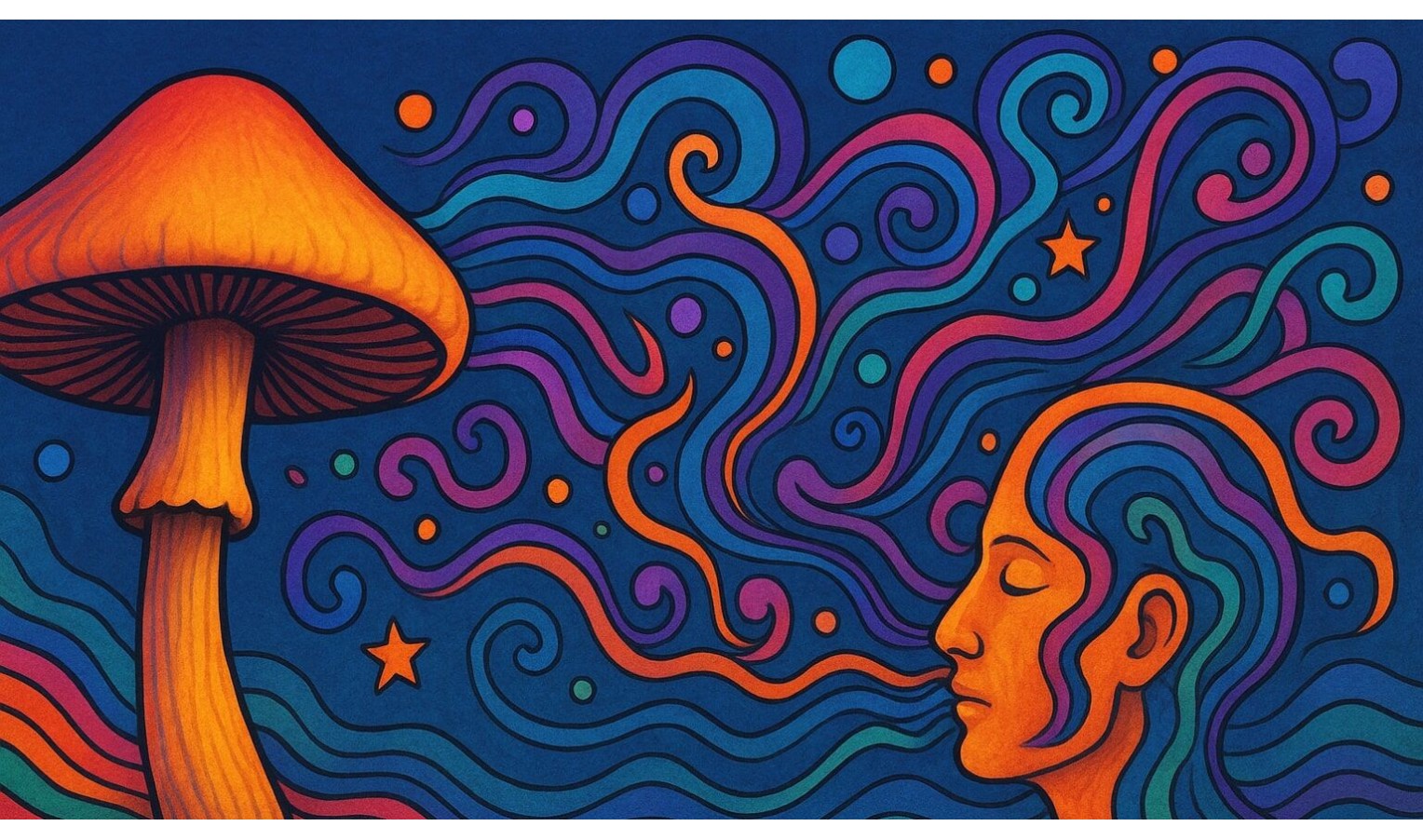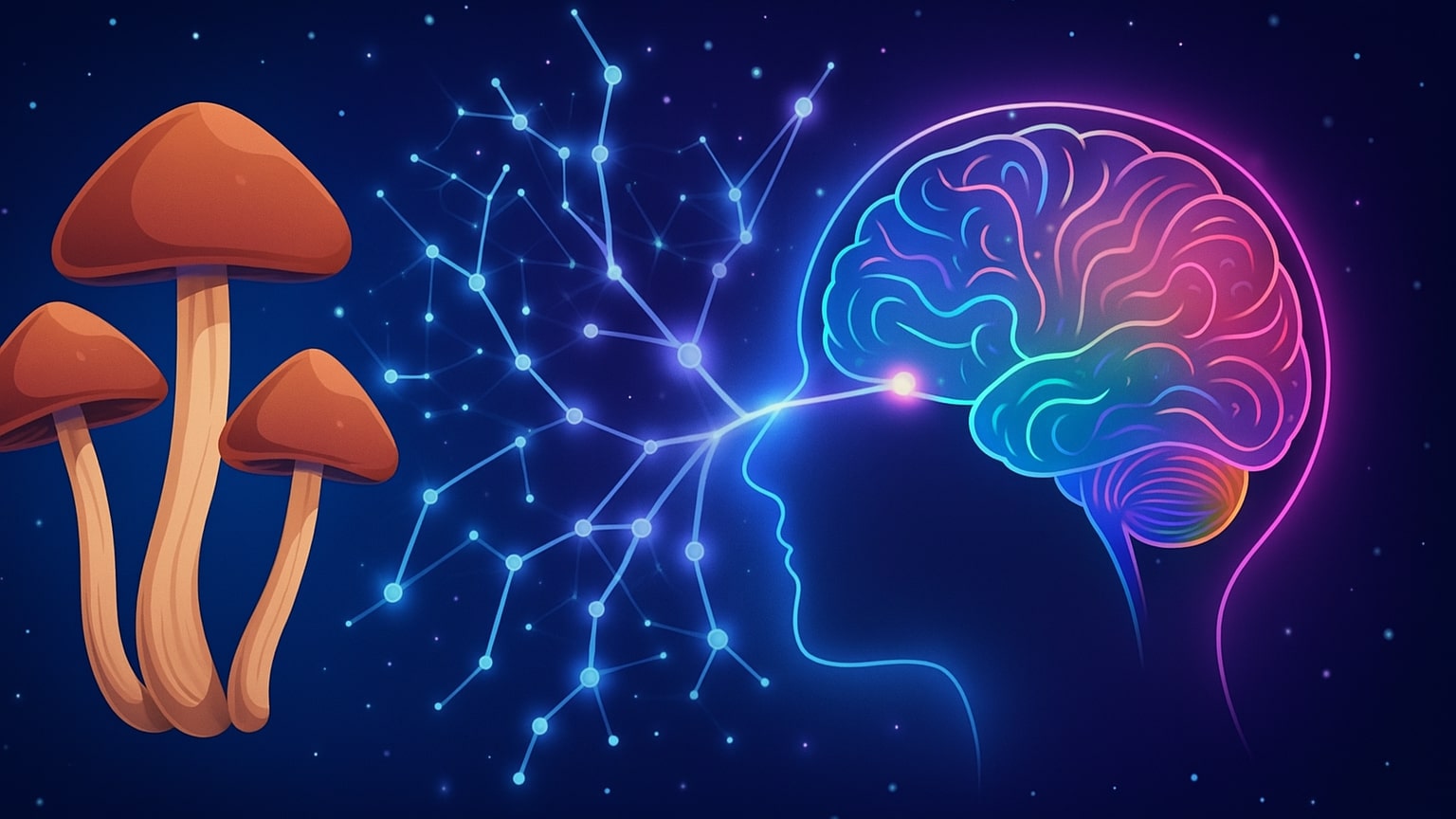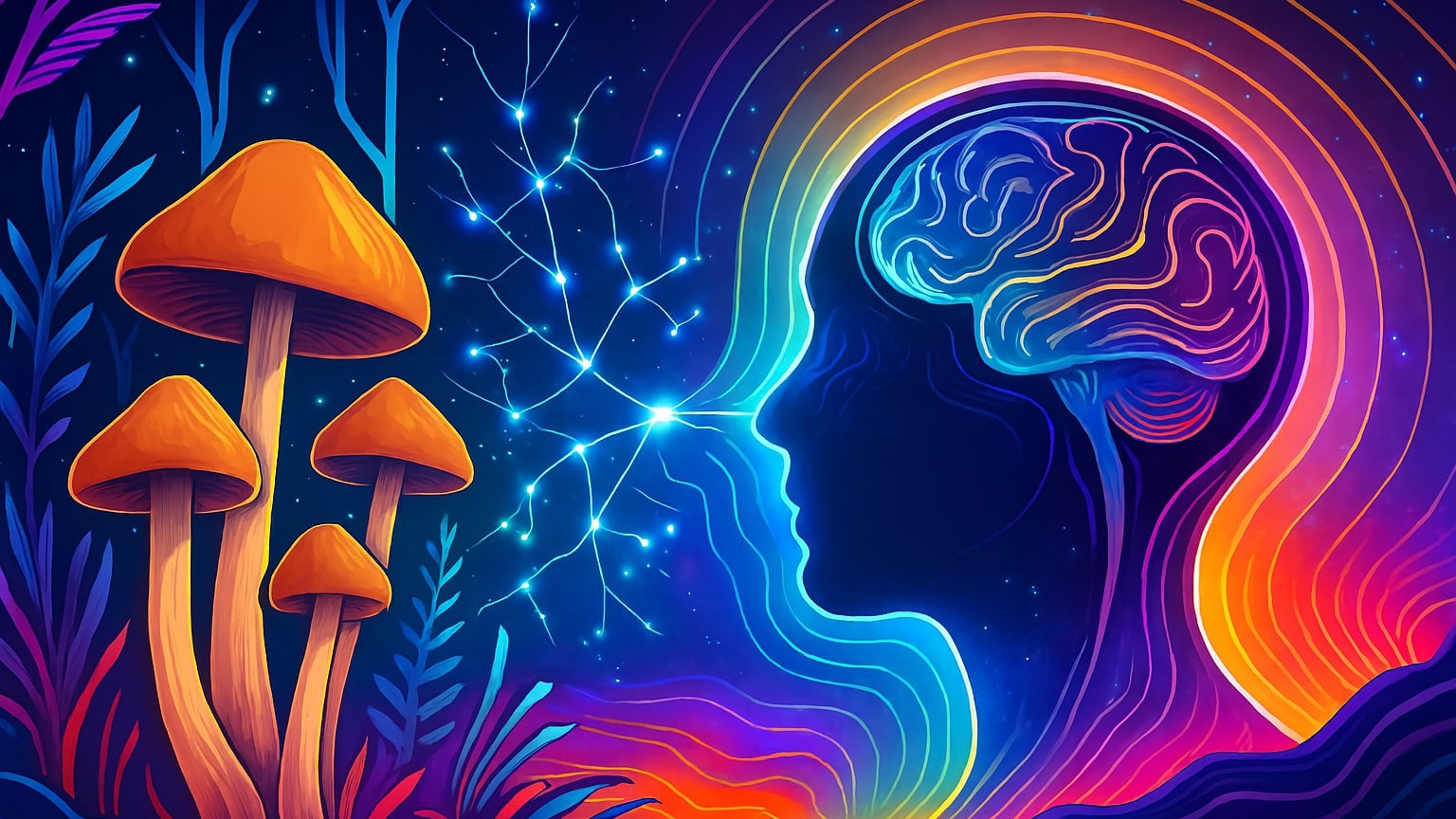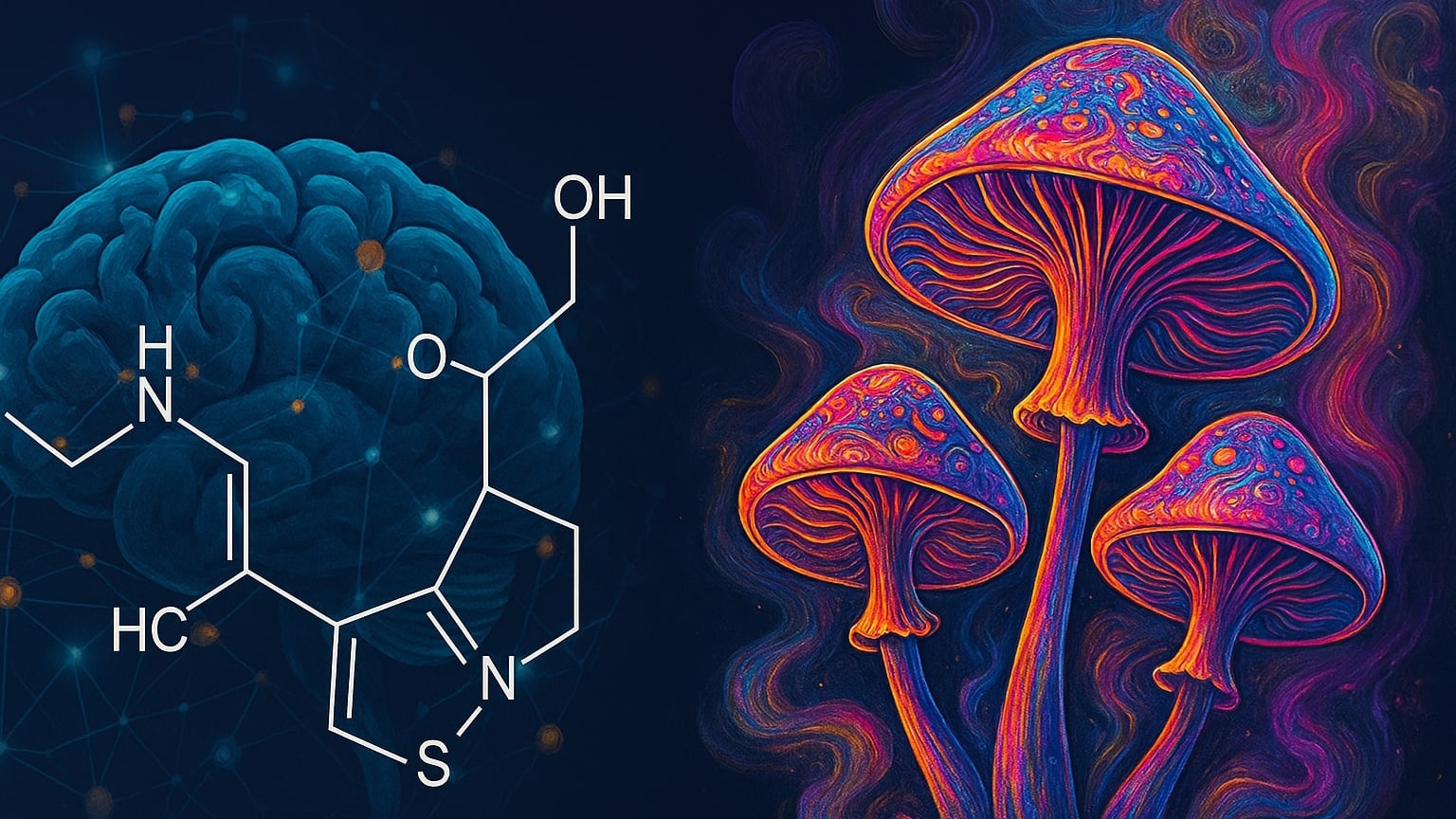0.00€
CheckoutHow psilocybin works: how “magic mushrooms” change your perception of reality

What are psilocybin and psilocybin mushrooms?

Psilocybin is a natural psychoactive compound found in psilocybin mushrooms, also known as magic mushrooms or psychedelic mushrooms. Consuming these mushrooms causes an altered state of consciousness, visual effects, and heightened emotional sensitivity.
When psilocybin enters the body, it is converted into psilocin, a substance with a tryptamine structure that interacts with the brain's serotonergic system. This interaction affects neurotransmitters, creating the characteristic effects of psilocybin.
Interestingly, similar to medical cannabis, which is used for therapeutic purposes, psilocybin mushrooms are being studied as a tool for psychotherapy and the treatment of depression, anxiety, and other mental disorders. Their ability to alter perception and increase emotional flexibility makes them a promising tool in modern mental health science.
Mechanism of action: the role of receptors and neurotransmitters

After psilocybin is converted into psilocin, the substance begins to act as an agonist of serotonin receptors, especially the 5-HT2A receptor. It is this interaction that causes the characteristic effects of psychedelics, including altered perception and the vivid visual effects of psilocybin.
The main mechanisms of action of psilocin can be summarized as follows:
- Stimulation of the serotonergic system — psilocin increases neuron activity, affecting mood, emotional sensitivity, and cognitive functions.
- Changes in information processing in the brain — cerebral cortex activity changes, leading to unique sensory and emotional experiences.
- Increased neuroplasticity — psilocin promotes the formation of new neural connections, which is important for psychotherapy and the treatment of depression.
In addition to studying pharmacological effects, many researchers and collectors can legally purchase psilocybin mushroom spores for scientific purposes. Among the popular Psilocybe cubensis spores, the following stand out:
- Hawaii — known for their mild, visually rich effects, often used for meditative practices.
- Lizard King — stand out for their powerful psychedelic activity and vivid visual experiences.
- Burma — characterized by mild physical effects and a sustained emotional high.
- Golden Teacher — popular for their balanced effect and promotion of deep insights and spiritual journeys.
These spore strains allow you to safely explore the effects of psilocybin and its interaction with neurotransmitters and the serotonergic system.
Practical application and therapeutic potential

Today, psychedelics, including psilocybin mushrooms, are being studied not only for spiritual practices but also for medical purposes. The effects of psilocybin can be used to improve mental health, increase creativity, and enhance emotional stability. Psilocin use is associated with increased neuroplasticity, which opens up new possibilities in the treatment of depression, anxiety, and post-traumatic stress disorder.
Below is a table of the main areas of application for psilocybin mushrooms:
| Field of application | Description | Note |
| Treatment of depression with psilocybin | Helps reduce symptoms of depression even in resistant cases | Controlled doses are used |
| Treatment of mental disorders | Reduces anxiety, improves emotional regulation | Often in clinical studies |
| Spiritual journeys and self-discovery | Reduces anxiety, improves emotional regulation | Suitable for meditation and psychotherapy |
| Psilocybin microdosing | A mild stimulating effect without a strong psychedelic effect | Popular for creativity and focus |
For those studying psilocybin mushrooms and their therapeutic potential, mushroom spores are often legally available for scientific and collection purposes. This allows for the safe study of the mechanisms of action of psychedelics and their effects on the serotonergic system and neurotransmitters without consuming the fruiting bodies themselves.
This text is for informational purposes only and does not contain instructions for cultivation. Any actions involving plants of the Cannabis genus must comply with the laws of your country/region.
